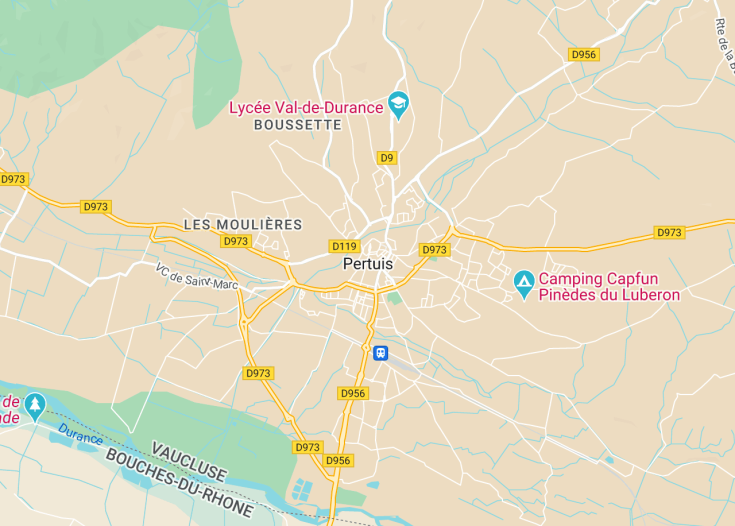Nestled in the scenic region of Provence, Pertuis is a charming French town known for its vibrant culture and stunning landscapes. This historic town offers a perfect blend of ancient architecture and modern conveniences, making it a fascinating destination for travelers seeking a taste of authentic French lifestyle. From its picturesque streets to its lively markets, Pertuis provides a delightful experience with its rich history, excellent wines, and friendly locals.
Explore Pertuis during the lively weekly market. It’s the perfect opportunity to sample local produce and artisanal products, enriching your understanding of the region’s culinary heritage.
Plan your visit in the spring to enjoy Pertuis at its most beautiful, with mild weather and the countryside in full bloom, ideal for outdoor activities and leisurely strolls.
Top things to do & see in Pertuis
Select the following sights and activities to discover best tickets and tours available in Pertuis.
Pertuis: A Gateway to the Natural Beauty of Provence
| Country | France |
| Time in Pertuis | GMT+1 |
| Language spoken | French |
| Population | 19,827 (source: latest municipal data) |
| Currency | Euro (€, EUR) |
| Airports |
|
Located in the vibrant region of Provence, Pertuis, France, offers a unique mix of historical architecture and modern amenities amid stunning natural landscapes. The town dates back to the 12th century and showcases a rich heritage evident in its well-preserved medieval structures. Visitors and residents enjoy the charm of its old town, with narrow, winding streets and colorful facades, lined with small shops and quaint cafes. Not just a peaceful retreat, Pertuis is a dynamic community with an emphasis on culture and art. Monthly markets and annual festivals such as the Wine and Garlic Festival bring the community together in celebration of local produce and traditions.
Where is Pertuis?
Pertuis is nestled in the southeastern part of France, in the heart of the Provence-Alpes-Côte d’Azur region.
Distances:
| Route | Distance by car | Time by car |
|---|---|---|
| Marseille to Pertuis | 34 miles (55 km) | 40 minutes |
| Aix-en-Provence to Pertuis | 15 miles (24 km) | 25 minutes |
What is Pertuis famous for?
Pertuis is renowned for its historical architecture, its vibrant weekly markets, and its scenic location, which serves as a gateway to the Luberon National Park, famous for its lavender fields and vineyards.
History
Prehistoric Period to Roman Occupation
Pertuis, situated in the heart of Provence in France, has been a crossroads of human activity since prehistoric times. Archaeological finds in the area indicate that the region was inhabited by various tribes, who utilized the fertile lands and strategic location. With the advent of the Roman Empire, Pertuis became part of a vast network of trade and military routes. The Romans built infrastructure, including roads and aqueducts, some of which can still be traced today.
Medieval Era (5th – 15th Century)
With the decline of the Roman Empire, Pertuis saw a shift towards a more feudal society. The town was fortified in the medieval period, remnants of which are evident in the old town’s layout with narrow winding streets. During this time, Pertuis was under the influence of various local lords and religious entities. The town served as a minor yet strategic trading post that connected larger cities like Aix-en-Provence and Marseille.
Renaissance to Modern Era (16th – 18th Century)
During the Renaissance, Pertuis flourished as a center of agriculture and trade. The town’s architecture began to reflect the Renaissance influence, with the construction of elegant townhouses and public buildings. The local governance, inspired by the broader European enlightenment, brought about significant administrative and social reforms, laying the groundwork for a modern civic structure.
19th Century to Present
The town entered the industrial age with new vigor, connecting to the broader rail and road networks in France. This period marked significant population growth and economic development. Today, Pertuis is known for its vibrant culture, historical sites, and active participation in regional politics and economics. The town blends its rich historical heritage with modern amenities, making it a unique part of the Provencal landscape.
Visit Pertuis
Attractions in Pertuis
Exploring Pertuis offers a journey into the heart of Provence with its rich history and vibrant culture. In the town center, the Church of Saint-Jacques, dating back to the 16th century, stands as a testament to Gothic architecture. The nearby Château de Val Joanis, a vineyard that traces its roots back to Roman times, is not only famous for its wines but also for its splendid gardens.
- Visit the Old Town with its medieval architecture.
- Explore local vineyards and enjoy wine tasting.
- Enjoy art exhibitions at the Maison de la Photographie.
- Attend the weekly market for local crafts and produce.
Annual Events in Pertuis
Throughout the year, Pertuis hosts several cultural and traditional events that reflect its rich Provencal heritage. The Pertuis Festival in July celebrates local music and arts, showcasing talents from around the region. In autumn, the Grape Harvest Festival takes place, offering tourists a taste of local agricultural practices and products.
Best time to visit Pertuis
The best time to visit Pertuis is during late spring (May to June) and early autumn (September to October). During these months, the weather is pleasantly warm, and the crowds are smaller compared to the peak summer months, making it ideal for exploring the town and surrounding countryside.
Is Pertuis worth visiting?
Pertuis offers a unique blend of historical depth and contemporary lifestyle, making it a worthwhile destination for those interested in the Provencal way of life. While the town provides a quieter experience compared to major French tourist hubs, its authentic charm, historical sites, and cultural festivals provide a rich travel experience. However, visitors looking for bustling city life might find Pertuis less appealing. Overall, for those seeking a serene getaway with a historical twist, Pertuis is certainly worth considering.









